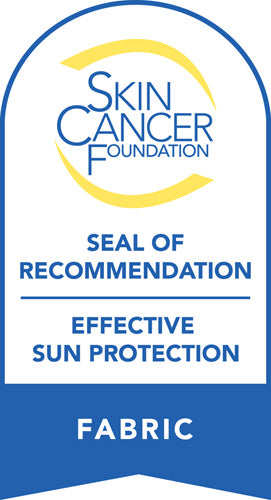Melanoma on Dark Skin: What It Looks Like and How to Spot It
According to the Melanoma Research Alliance, while melanoma only accounts for about 5% of annual cancer diagnoses in the U.S., it's the deadliest type. The non-profit also noted that although diagnoses of melanoma on dark skin are less common, once they do get diagnosed, they're more likely to be an advanced case.
One possible reason is that people with dark skin tend to think they have a low melanoma risk. While darker skin tones have more melanin, a natural pigment that protects against UV damage, it doesn't eliminate the risk of melanoma.
For those reasons, it pays to learn how to spot melanoma skin cancer signs if you have a darker skin tone. Our team at BloqUV has put together this guide to help you be in the know, so please read on.
What Does Melanoma Look Like on Black Skin or Other Darker Skin Tones?
How melanoma on dark skin looks depends on the type of tumor. There are several that can occur in people with darker skin tones:
- Acral Lentiginous Melanoma (ALM)
- Cutaneous Melanoma
- Nodular Melanoma
- Mucosal Melanoma
Acral Lentiginous Melanoma Symptoms and Appearance
According to the Memorial Sloan Kettering Cancer Center (MSKCC), although ALM is a rare condition, it's the most common type of melanoma that afflicts people of African and Asian descent. It can appear as brown or black discolorations or patches, often surrounded by normal-colored skin. However, it can also be a pinkish or reddish patch or a spot without any pigment.
ALM can occur on the hands and feet, including the palms, soles, and nails. ALM that develops under the nail, known as subungual melanoma, may appear as a dark stripe that resembles a fungus or blood streak.
Bob Marley, the legendary reggae icon, tragically died of a melanoma that developed under a toenail, according to the Skin Cancer Foundation (SCF). He passed away when he was only 36 years old.
Cutaneous Melanoma Symptoms and Appearance
Cutaneous or skin melanoma is due to overexposure to the sun's ultraviolet (UV) rays. It usually looks like a mole and can sometimes develop from a mole. It can occur anywhere from the head down to the toes and may exhibit the following characteristics:
- Asymmetry
- Irregular border
- Multiple colors or an existing mole that has changed color
- A diameter of over 6 millimeters
- A mole that has evolved in thickness or has grown in size
Other warning signs of cutaneous melanoma in people with black or darker skin tones are sores that don't heal or dry skin patches.
Nodular Melanoma Symptoms and Appearance
Nodular melanoma also results from overexposure to UV rays. Their appearance often differs from cutaneous melanoma, exhibiting the following characteristics:
- Dome-shaped appearance
- Discolored, raised growths
- Symmetrical
- Often has one color, like brown, dark blue, black, pink, or red
- May sometimes look like blood blisters
- May itch or bleed
Nodular melanoma can develop anywhere, but the most commonly affected areas are those often exposed to the sun.
Mucosal Melanoma Symptoms and Appearance
Mucosal melanoma is another rare type of melanoma that can develop in the lining of the mouth, vagina, or anus. They usually look like black or dark masses but can also be pink or red or lack pigment.
Performing a Skin Self-Exam for Early Detection
A monthly skin self-exam is imperative to maintain dark skin health and catch possible melanomas early. To perform this test, you'd need a handheld and full-length mirror.
Once you have your tools, carefully examine your skin from head to toe. In front of the full-length mirror, use the handheld one to check hard-to-see areas like the top and back of your head and neck. Look inside your mouth, too.
Pay even more attention to areas that get too little sun, such as your groin, lower legs, soles of the feet, and buttocks. Check your fingernails for dark lines, and look for odd markings on your palms.
For a closer, more thorough inspection, ask a partner to examine the hardest-to-see areas of your skin. It's also an excellent idea to self-examine your skin whenever you shower or put on your skincare stuff.
By being proactive with these checks, you'll be able to find changes on your skin that could indicate cancer. When caught early, appropriate melanoma treatment can often cure the cancer. Conversely, melanomas can become more challenging to treat in their later stages and may even turn deadly.
So, if you find anything, please see a dermatologist as soon as possible.
Annual Health Check-Ups Can Also Help
While many areas of the body are difficult to self-examine for melanoma, you can get help from your healthcare team through annual check-ups. For example, your dermatologist can perform a full-body skin exam, while your dentist can scan your oral cavity for ulcers and other symptoms. Your obstetrician/gynecologist can also look for signs of mucosal melanoma.
Minimizing Risks of Melanoma on Dark Skin
In addition to monthly (and thorough!) skin self-exams, you should take proactive and preventive steps to lower your odds of getting melanoma.
First, remember that the sun's UV rays are behind other skin cancer types, not just melanoma. So, if the sun beats down hard, seek shade as soon as possible. Stay indoors if the UV index in your area is high, too.
If you really must go out, wear protective clothing that shields your skin from the sun. Long-sleeved shirts, leggings, and clothes made from UPF fabrics are excellent investments.
Last but not least, please never use sunlamps or tanning beds. They emit harmful UV rays that can cause skin cancer.
Check Your Skin Starting Today
Remember: Melanoma on dark skin can present itself as discolored, dark spots, blood-like streaks under the nails, or black masses inside the mouth. So, examine your skin at least once a month to look for these symptoms. Please don't delay visiting your dermatologist if you find any weird changes or growths.
To give yourself even more sun protection, take your outfits to the next level by donning BloqUV clothes. We make them with BloqTek, our proprietary fabric with UPF 50, which blocks 98% of UVA and UVB rays.
Explore our collection now to find and grab fantastic deals on stylish yet practical, sun-protective clothing!



